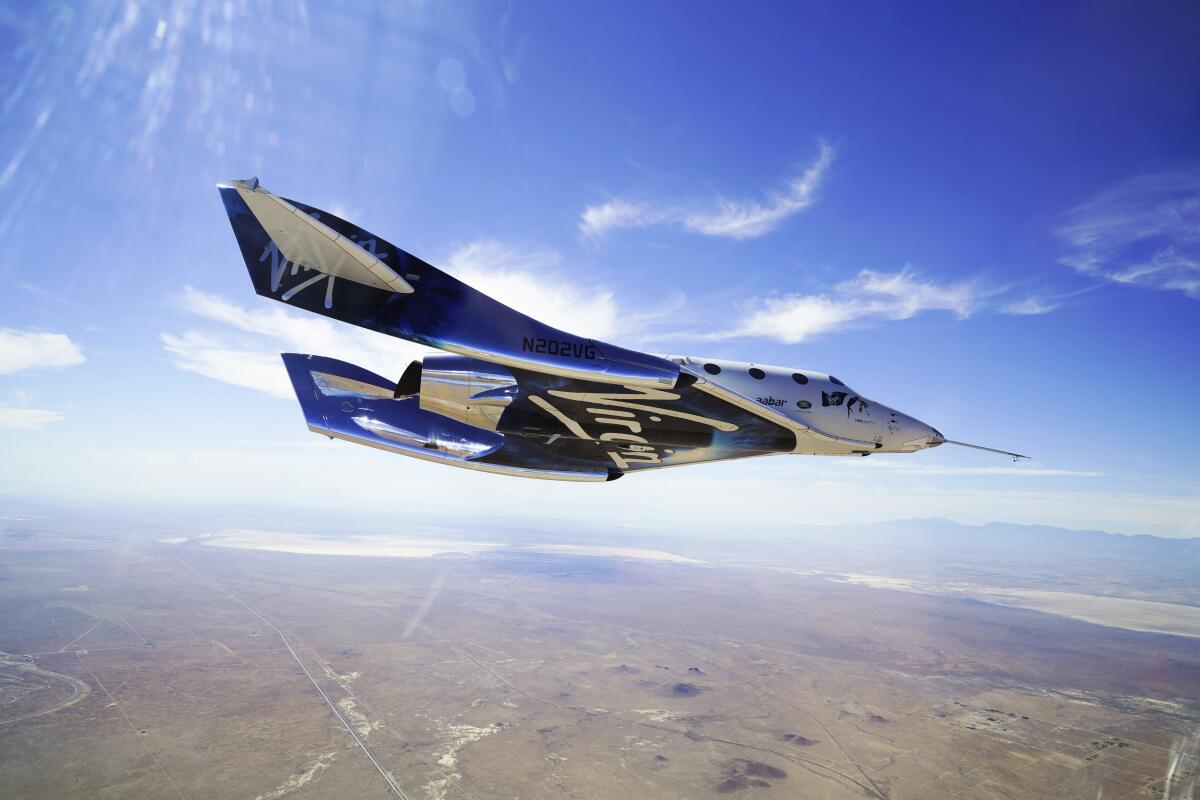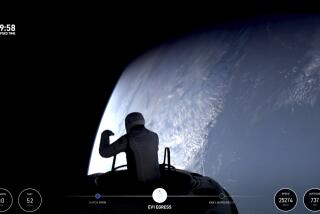Editorial: Space, the final frontier, is now open (to the super-rich)

There’s a new space race underway. Over the coming weeks and months, two, three, possibly four new space tourism ventures will launch from U.S. soil, taking paying passengers into the Earth’s atmosphere.
On Sunday, British tycoon Richard Branson will be one of the first four passengers soaring into space on his Virgin Galactic’s rocket plane. Later this month, Amazon founder Jeff Bezos is expected to be on the first human spaceflight launched by his company Blue Origin. Elon Musk’s SpaceX is planning to take paying passengers into orbit this year. And Boeing is hoping to use its Starliner spacecraft to carry space tourists.
What was once the final frontier, where “no man had gone before,” could soon become the playground of the rich and daring. That comes as no surprise.
For centuries, humankind has looked to the sky in wonder. Sure, scientific advances have helped shed some light on the mysteries of space. Telescopes have allowed us to see stars and planets in greater focus. Rockets and space shuttles allowed the people to travel into space and even walk on the moon. Rovers and unmanned spacecraft have given us images and sound from Mars.
But the experience of being in space and looking down on the shimmering blue Earth has been largely the domain of highly trained astronauts on government-run flights. Until now. With technological advances fueled by billions of dollars supplied by some of the world’s richest men, the opportunity to shoot into the Earth’s orbit will soon be open to the public. Or, that is, the public willing to withstand a Mach 3 ascent into the sky and capable of spending at least $250,000 for the pleasure of it.
The first space tourists won’t be taking a leisurely float over the Earth. What they’ll experience sounds more like the most extreme amusement park ride imaginable.
The Virgin Galactic rocket plane, attached to a larger carrier plane, will take off from a runway in New Mexico. When the carrier hits an altitude of 50,000 feet, the plane will detach, fire up its rockets and blast up into space at three times the speed of sound, or roughly 2,300 mph. When the plane reaches the blackness of space, the motor will shut off and the plane will hover at nearly 300,000 feet above Earth. Passengers can briefly unbuckle to experience a few minutes of weightlessness. Then the plane descends, landing on the same runway as before. The trip takes about an hour.
Bezos’ Blue Origin, which launches on July 20, will offer a similar experience, with passengers in the autonomous capsule having several minutes of weightlessness and Earthly views before the capsule returns to terra firma, floating under parachutes.
Of course, it’s all extraordinarily expensive. One person paid $28 million in an auction for a seat with Bezos on Blue Origin’s first flight.
It’s also dangerous. Spaceflight is still a highly risky endeavor; even the experts at NASA have had deadly accidents, including two space shuttle disasters, the Challenger in 1986 and the Columbia in 2003. In a world with life-and-death needs for technological advancements — cures for cancer and infectious diseases, carbon sequestration and geo-engineering to mitigate climate change — can we really celebrate the entrepreneurs who have chosen to spend billions of dollars on space tourism?
Yes, we can. We still want some visionaries to put money behind curiosity and imagination. We still need to push the limits of human experience and pursue what seems impossible or impractical. Even if dreams of spaceflights seem gratuitous, there will be Earthly benefits from the pursuit. The race in the 1960s to put a man on the moon did more than just that — it helped develop technology that we rely upon today, including solar panels, portable computers and air purifiers.
So let the new space race begin.
More to Read
A cure for the common opinion
Get thought-provoking perspectives with our weekly newsletter.
You may occasionally receive promotional content from the Los Angeles Times.










